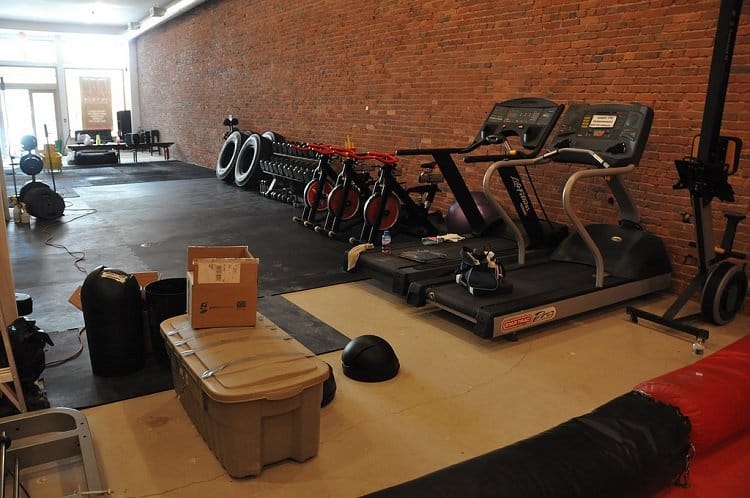Most people go to the gym for the workout trying to be fitter and live a healthier life. However, they may be getting much more than a well-shaped, healthy body from fitness centers. They could be leaving with very harmful disease-causing germs, as gyms are breeding grounds for some of the deadliest germs. For instance, norovirus, which is linked with stomach aches, diarrhea, and vomiting, can survive on the surface of gym equipment for up to a month; and the shower has been established to provide a good breeding ground for the fungi that cause foot infections.
The following discussion looks at the various germs found in the gym, where they are found in the gym, and how you can avoid carrying them or getting infected by them:
Human papillomavirus (HPV)
HPV is among the most common sexually transmitted viruses, but it is not exclusively passed through sexual intercourse. It causes genital warts in men and women. Also, it can bring about warts in the throat, mouth, and even on feet—those are called plantar warts. If unattended to, the virus can lead to cervical cancer in women, and penile and anal cancer in men.
Gym goers can pick up plantar warts by walking barefoot in gym bathrooms and showers. You can prevent yourself from getting HPV or plantar warts by ensuring you never walk barefoot in showers at the fitness center. You should always have flip-flops on your feet. Also, avoid reusing the socks that you used at the gym.

Cold and flu virus
Flu germs are found mostly in interior door handles. The microorganisms are also concentrated on cardio and weight-training machines, dumbbells, the front area of the gym where checking in takes place, the water fountain, and on many of the health club’s surfaces.
To avoid infection with the flu and cold virus, ensure you regularly clean your hands and avoid touching your nose, eyes, and mouth while at the gym. Another effective way to manage these germs is by wiping the equipment with a disinfectant before and after using them. By doing so, you wipe away whatever germs others may have deposited there, and you wipe away what you may have added to the equipment.
MRSA Staph Infection
Methicillin-resistant Staphylococcus aureus (MRSA) is a microorganism that brings about infections in various parts of the human body. It is hard to treat because of its resistance to antibiotics, unlike other strains of staph. Staph infections are rare, but due to their life-threatening nature, they should get some serious attention. MRSA is likely to inhabit the same locations as the cold and flu virus, which implies that they can be found on any surface that comes into contact with people or that other people may have touched.
To avoid infection with the MRSA virus, you need to ensure you cover up any cut or broken skin on your palms, as the virus gets into the body through an opening in the skin. The covering of palms is mainly related with any blisters and calluses that you may have sustained at the gym. Gloves may not be the best option to prevent MRSA infection because they enclose the open wound in a moist area, which is a good home for bacteria. The ideal solution is to use a piece of tape to cover any broken skin.

Candida
Candida is the most common cause of fungal infections. This fungi looks like yeast and is linked with infections such as ringworm, athlete’s foot, yeast infections in women, and jock itch in men. You are likely to pick up this microorganism from showers, locker rooms, swimming pools, saunas, and other places in the gym.
You get it by making contact with contaminated surfaces. The fungi thrive in warm, moist places, hence the reason you get it in the aforementioned areas. The fungal skin infections that are caused by these fungi are treated by using antifungal creams, and if it advances into an infection, antibiotics are the means to handle them. To prevent yourself from getting infected with candida, you have to avoid contact with surfaces by having flip-flops on in shower rooms and trying to reduce direct skin contact with surfaces.
Klebsiella
This is a kind of bacteria that is found in the intestines and stool of a healthy human. It can lead to some infections such as pneumonia, urinary tract infections, and in unusual cases, may cause meningitis and blood infection. The disease will depend on the way the bacteria entered the body—if through the nostrils, it causes pneumonia. Klebsiella spreads through contact, thus the main culprits include weight-training equipment, cardio machines, locker rooms, water fountains, training mats, and much more. The bacteria is dealt with using antibiotics, though some strains of the bacteria are resistant to some antibiotics, so the right one has to be used.
Mizu Towel is the world’s first bacteria detecting towel. Its color changing strips detect residual soap, dirt, sweat, and bacteria metabolites. While its proprietary technology allows it to dry 3x faster than the average towel. Mizu is manufactured using the very same artisanal crafting methods native to Imabari, Japan – the haven for the world’s softest towels. Mizu towel is perfect for you and your baby to stay comfy and healthy.
Image source: MartialArtsNomad.com; jwstrength79

